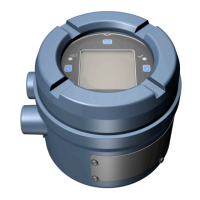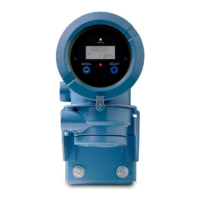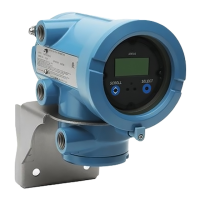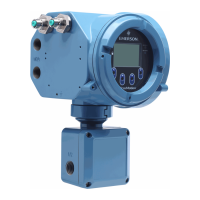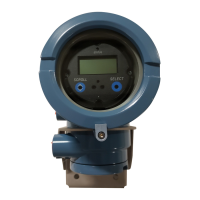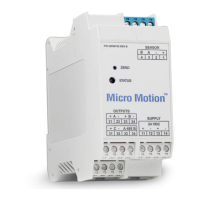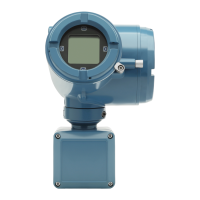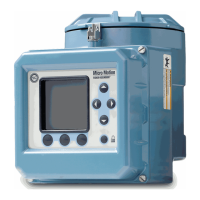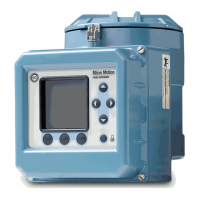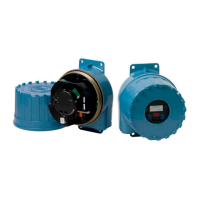Configuration and Use Manual 127
Custody Transfer
Measurement Performance TroubleshootingCustody TransferCompensation
Note: If the LED blinking option is disabled, the status LED will not flash to indicate security breach
mode.
In security breach mode, it is possible to perform a number of actions, including zeroing, loop test,
output trim, resetting totalizers (not inventories), and basic configuration. These functions (except
resetting totalizers) will become unavailable after the transmitter has been secured.
Note: If the custody transfer application is enabled on the transmitter, it is not possible to perform a
loop test of the frequency output, even when in security breach mode.
11.6.1 Transmitter outputs in security breach mode
While in security breach mode, the following conditions apply to the transmitter’s outputs:
• The totalizers (including the totalizer on the local display, if present) will not increment or
decrement.
• If OIML compliance was selected, the security breach is handled like a fault alarm. Outputs
and digital communications are set to their configured fault levels.
• If NTEP compliance was selected:
- The frequency output is inactive (no pulses are emitted, even during fault conditions).
- The flow rate is set to zero. Other changes may occur as a consequence of zero flow.
In addition to the LED, these special output functions help identify a transmitter that is not yet secure,
and prevent a non-secure transmitter from being used effectively in a custody transfer application.
11.6.2 Configuring the totalizers in security breach mode
While in security breach mode, you can configure how totalizers can be reset. Transmitters can have
their totalizers reset from the local display, via digital communication, both of these, or neither of
these (i.e., no totalizer resetting).
To configure totalizer resetting in ProLink II, choose
ProLink > Configuration, click the System tab,
and select a totalizer resetting scheme from the
Totalizer Reset Options list.
11.7 Secure mode
When a custody transfer transmitter is ready to be put into service, it must be placed into “secure”
mode. A hardware signature is imprinted in the transmitter to prevent unauthorized changes, and
many of the configuration features of the transmitter are disabled. The status LED will turn green (in
the absence of any other fault condition) to indicate that the security breach alarm has been cleared.
At this time, a weights and measures authority may mechanically seal the housing against access
using the locking clamps.
The hardware signature “marries” the core processor to the transmitter. Attempting to replace the core
processor will cause a Sensor/Xmtr Communication Error alarm (A026). Any change in the core
processor’s configuration will trigger a security breach alarm (A027). These alarms will persist until
the transmitter is placed into security breach mode and then back into secure mode.

